Morning Larks Versus Night Owls: What Time Do We Leave the Nest?
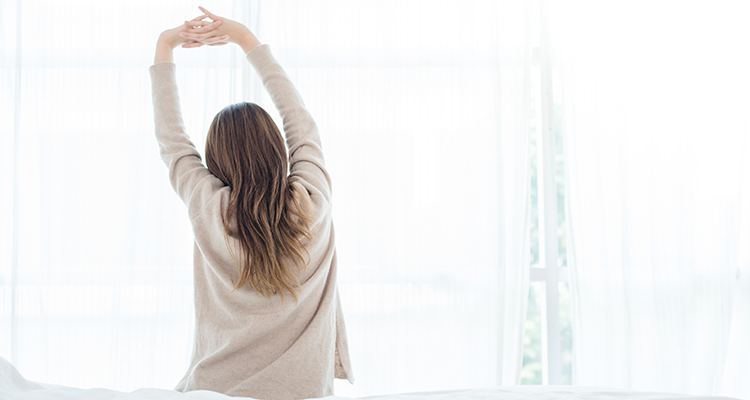
We all have different preferences regarding all sorts of things – what we wear, what we eat, what we watch on television. Some of us are a little bit country, some are a little bit rock ‘n roll, and some are thrashing in the mosh pits of heavy metal concerts. Sleep is no exception: Different folks go to bed at different strokes of the clock.
The two extremes (and most widely known monikers) are the morning larks and the night owls, two groups of people whose sleep habits land on the opposite ends of the spectrum.
But, while rest and rise-time may feel insignificant in the grand scheme of things, it affects many aspects of well-being. It may even play a role in how long we live.
Content
The Genes Behind the Bedtime

It’s a common misconception that people are fully in control of their sleep habits. They choose to be a morning person, jumping out of bed and going for a five-mile run at dawn. Or they choose to be a night person, staying up devouring novels or painting on canvas in their living room.
While we do physically choose whether to rise with the sun or hit the snooze button twenty-six times, our preferences aren’t influenced by simple choice; they’re dictated by genetics.
In fact, a recent study found that 351 regions of the genome affect the type of sleeper and riser we are. Previously, it was believed only 24 genes played a role.
During this study, researchers looked at the genetics of 70,000 volunteers, relying on data from gene analysis companies like 23andMe. They asked the volunteers to self-report their sleep habits but – since self-reporting is notoriously unreliable – they backed up the reports with data from wristband activity monitors.
While they discovered that night owls were more likely to struggle with mental illness (more on that below), they recognized that the already complicated issue of sleep is even more complicated than previously thought.
The genes that determine a morning versus night person play a delicate and intertwined role in everything from hormone production to the function of the retina (the layer in the back of the eyeball that holds the light-sensitive cells, triggers impulses, passes info to the brain, and forms the visual images we see). The genes affect circadian rhythm as well, the internal 24-hour clock inside the body that regulates the sleep-wake cycle.
The genetic deviations are likely rooted in evolution as hunters and gatherers were at an advantage when the group included members able to stay on guard throughout the night. Sleeping in shifts, rather than all at once, made the family far less vulnerable to threats.
Nowadays, the same benefits don’t apply: No one really needs their brother or sister to stand guard in the doorway, ready to defend against a wooly mammoth. But evolutionary tendencies stick around, whether we want them to or not.
This isn’t to say that sleep habits are set in stone; conversely, they alter themselves frequently. Young children may rise early only to sleep later and later as they approach the hibernating teen years. And young adults may stay out late only to look forward to reasonable bedtimes as they reach their thirties.
Our biology might not change but our sleep needs do. And, often, we adapt accordingly.
How Does Our Bedtime Influence Our Health?
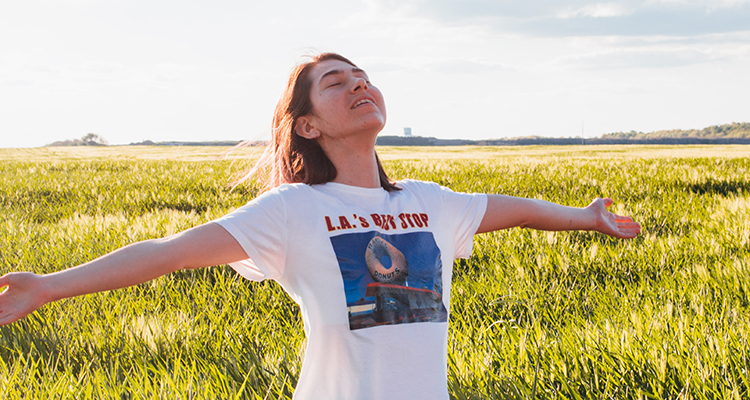
It’s well-established that nightshift workers experience higher rates of certain types of cancer than people who have day jobs. Research suggests that women, in particular, are 19% more likely to develop a variety of cancers (including skin, lung, and breast) when working the nightshift long-term.
The reason – according to the research – lies in the disruption of the circadian rhythm, though melatonin may play a role. The release of melatonin, the sleep hormone, is triggered by darkness, which is why nightshifters (who sleep during the day when it’s lights out) tend to have lower levels. Because melatonin is an antioxidant and an immune system stimulant, it inhibits the growth of some tumors (including skin, lung, and breast).
To be fair, other studies have not found a nightshift/cancer link. Not only that, but compounding factors may play a role as well. Nightshift workers, for example, may be less likely to cook a healthy meal after a “day” at the office and opt instead to grab fast food. They may be less likely to work out regularly (leading to higher BMI) and more likely to smoke. All these factors, on their own, also increase cancer risk.
Still, working the nightshift is different from being a night owl as night owls go to bed later in the evening, but they do sleep traditional hours. So, do those who retire well after sunset suffer from health risks?
Research suggests that there is a link between night owls and risk of disease, but it comes with plenty of nuance. For one thing, there’s a bit of the chicken and the egg dilemma. When scientists discovered that night owls are prone to depression, for example, they couldn’t be entirely sure of causation. In other words, they don’t know what comes first: Staying up late or chemical imbalance? Are night owls more likely to suffer from depression or are depressed people more likely to be night owls?
The same issues with nightshift workers apply to night owls too – they’re more likely to engage in unhealthy lifestyle choices, including lack of exercise and late-night snacking (which, since night owls are only human, is usually done via things like bags of chips and not sticks of carrots). Night owls are more likely to use tobacco, drink caffeine-laden coffee and soda, and consume high amounts of alcohol.
Of course, the world doesn’t cater to night owls either, a factor that complicates their ability to perpetuate a healthy lifestyle. For instance, some major gyms (such as 24-hour Fitness) are open all night, giving night owls a chance to hit the treadmill or elliptical. But the smaller gyms – as well as those not part of national chains – typically keep hours where it’s lights out not long after sunset. Food is problematic too: A night owl who wants a salad at 3:00 AM will have a hard time finding any leafy greens. But they’ll find plenty of hamburgers and fries within reach.
Whether it’s the result of genetics, the sleep-wake cycle, lifestyle choices, society’s tendency to close at 10:00 PM, or all of the above creating a perfect storm, night owls are more likely to suffer from obesity, high blood pressure, type 2 diabetes, and cardiovascular disease. Their mental wellness is impacted too, as they’re more likely to experience substance abuse and addiction, depression, anxiety, and schizophrenia (at least from a casual standpoint).
Does Our Bedtime Affect Our Lifespan?
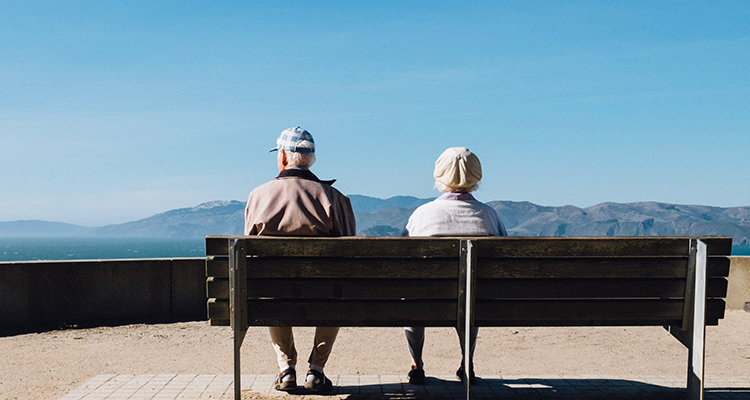
If bedtime affects health, then it’s natural to assume it affects lifespan, too. Research finds that night owls are 10% more likely to die sooner than morning larks. A study conducted on 433,000 British citizens asked volunteers to place themselves in four categories: Definite morning types, definite evening types, moderate morning types, or moderate evening types.
After establishing which category applied to each subject, the researchers then tracked all the participants for the next 6.5 years to see how sleeping patterns affected risk of death.
Night owls were slightly more likely to die than their early rising counterparts and more likely to suffer from several health issues. In backing up some of the previous studies, this research discovered that night owls were:
- 50% more likely to suffer from psychological disorders
- 30% more likely to be diabetic
- 25% more likely to have neurological problems
- 23% more likely to have disorders of the GI tract
- 22% more likely to suffer from respiratory disease
All of this puts them at risk for shorter lives.
But, like the aforementioned studies, the researchers acknowledged that night owls were more likely to engage in poor lifestyle choices that lead to higher BMIs, tobacco use, alcohol use, and the subsequent issues those choices followed. The researchers also focused more on the fact that night owls were at odds with the rest of the world.
Their theories went beyond lack of access to gyms or healthy dining in the wee hours of the morning. Instead, they argued that the act of having to go against your natural clock – which night owls navigating a day-centric world must do – causes misalignment. A misaligned mind or body, like a misaligned car, causes issues if the underlying problems are allowed to persist.
Night owls might prefer to sleep until noon, but work tends to start a nine. They may prefer to socialize at 11:00 PM but everyone they know is sound asleep (birds of a feather don’t necessarily snooze together). They may want to mow their lawn at 9:30 in the evening, but it angers the neighbors. So, they’re forced to bend to a world opposite of the one that comes naturally to them.
How Many People are Night Owls or Morning Larks?
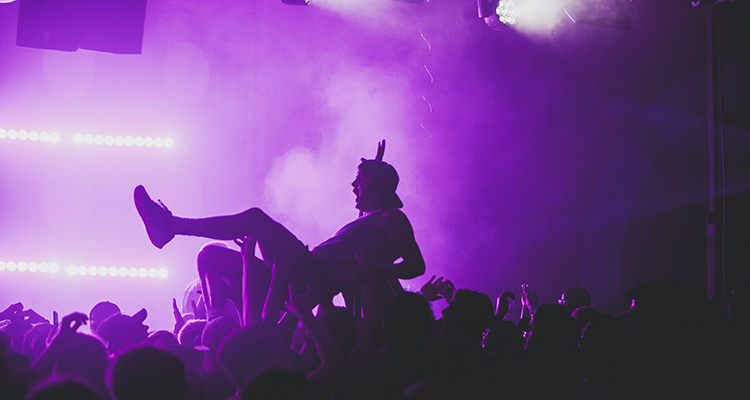
While many of us are tempted to describe ourselves as either night owls or morning larks, the vast majority of people are neither. Instead, most of us fall on the sleeping spectrum, with patterns of rest that are moderate in nature.
Along these lines, it can be hard to determine exactly how many people fit a category incongruent with practical function. Some of us may be night owls but never realize as we’re busy repressing our biological propensity in favor of a lifestyle that jives with the waking world.
Even so, a few studies hypothesize the exact percentages: How many night owls don’t give a hoot about a prudent bedtime and how many morning larks believe that the early bird gets the worm? Dr. Richard Coleman, a chronobiologist who specializes in the study of sleep cycles, found that only 20% of the population identified as either a night owl or a morning lark. The remaining 80% found themselves somewhere in the middle.
Other studies have reported more morning people but a similar number of night owls. In the same British study that demonstrated differences in the health status of night owls and morning larks, 9% of people identified as night people and 25% as morning people.
Regardless of the research, these results come with a caveat. Many people (as mentioned previously in this article) are forced into the “up and at ‘em” role whether they want to be or not. Take for instance moms and dads – they may want to sleep in late only to be forced to wake up because their child insists on rising with the sun.
The morning lark vs. night owl classification isn’t absolute either. It’s possible for us to define ourselves one way most of the time while also deviating from that category when we’re able. For example, we might get up early in the morning on weekdays to go to work, feeling alive and ready to conquer our day (after we drink coffee, naturally). But, come Saturday and Sunday, we sleep in later, ditching the Folgers for the fold of our satin sheets.
All in all, it’s difficult if not impossible to say exactly how many night owls exist and how many morning larks exist. Sleep preference may be biological, but that biology is sometimes superseded by environment and necessity. Perhaps to understand our true tendency, we should be asked, if given the choice, what type of bird we’d prefer to be.
What we might discover is that many people are simply programmed to the Earth’s axis – they wake with the sun and they start to wind down as darkness beckons. And their ability to get out of bed or fall asleep at night changes with the season. It’s harder to rise on a cold winter’s morning than a bright summer’s day.
Should Schools Start Later?

We’ve established that, from a logistics standpoint, it makes more sense to be a morning lark. The world offers more availability to those awake during the day, especially for individuals who don’t live in big cities like New York or Chicago where things tend to stay open later (if not all night).
But it’s not merely about access to business or things to do, night owls (or night owlets) are at a disadvantage when it comes to learning because of the early start times the vast majority of schools adopt. And this has started a sleep controversy (yes that’s a thing).
Early start times are most disadvantageous to teenagers due to their desired and biological sleeping habits. Toddlers and school-age children tend to get up early regardless of whether they have school or not; they’re morning larks so an early academic schedule works for them.
Teenagers, on the other hand, are well known for sleeping until noon, making first bell at 7:00 AM a challenge. It’s such a struggle for some adolescents that even the CDC (or the Center for Disease Control) questions whether schools should start later than they do.
According to the CDC, teenagers who don’t get enough sleep are at greater risk for substance abuse, tobacco use, poor academic performance, and obesity. The American Academy of Pediatrics has gone so far as to recommend schools delay their start times in order to better cater to the sleep needs of their young adult students.
The academy recommends middle and high schools start no earlier than 8:30 AM, a big deviation from the many high schools (and middle schools for that matter) that tend to start around 7:15 AM or earlier.
A 2014 School Health Policies and Practices study found that 93% of high schools and 83% of middle schools in the US started prior to 8:30 AM. Interestingly, some states we’re more likely to allow students to attend at later times. The majority of schools in North Dakota and Alaska started after 8:30 AM, whereas none started as late in Wyoming, Hawaii, or Mississippi.
One of the reasons doctors so passionately recommend later start times is that teenagers have immense sleep needs. On average, those between the ages of 13 and 18 should sleep between eight to ten hours a day in order to keep up with their developing bodies (and the challenges of puberty). To compare, most full grown adults can get by on seven hours a night without any issues.
As previously mentioned, adolescents who don’t get enough sleep face several health challenges, not only those noted above but others as well. They may suffer from depression or anxiety, choose sedentary lives over physical activity, and engage in more impulsive or reckless behavior.
The sleep challenges of adolescence have only grown worse with the popularity of electronics. As teenagers spend more nights on their iPads and smartphones, they go to bed later and later. And, yet they still must get up early in order to get to class on time. This results in less sleep and more problems.
As the idea that sleep patterns are biologically-based gains steam, it’s possible that we’ll see later start times in academics. Until then, parents play an important role in helping their teens get the sleep they require.
It’s recommended that moms and dads engage in the following:
- Model good sleep behavior
- Set regular bedtimes (even on weekends and vacations)
- Swap out bright lights for dim lighting
- Eliminate use of electronics in the hour before bed
- Push school boards to consider later start times by presenting science-backed research
The Qualities of Morning Larks
There’s no hard-and-fast rule that morning larks are always one way and night owls are always another way. But, in general, morning larks do possess common qualities, including:

Introversion: Morning larks tend to exhibit more introversion than extroverted night owls. This makes sense as mornings are known as quiet and peaceful times, moments of solitude where you can sit with the sunrise and reflect. Nights, on the other hand, invite socialization and celebration; no one ever attends a gala at 6:30 in the morning.
Diligence: Yes, morning larks tend to exhibit more diligence. But, in fairness, they have more time to be conscientious. Getting up and getting going tends to cultivate a production-friendly day. And that gives larks the chance to focus on and achieve their goals. This isn’t to say night owls can’t do the same, but morning larks might find an easier path.
Agreeableness: Morning larks tend to be more agreeable too. Part of this is perception influenced by pop culture, as movies often feature angsty and dark characters burning the midnight oil and thriving in the moonlight. It’s much harder to be brooding when you clap your hands each morning and jump out of bed, ready to conquer whatever comes your way.
Positivity: It turns out that rising with the sun is linked to a sunnier disposition. A study conducted at the University of Toronto and the Rottman Institute found that young and older early risers were generally happier and more likely to experience positive emotions. Going a bit further, when self-reporting the early risers were more likely to report high levels of perceived wellness.
Proactivity: It probably comes as no surprise that morning larks have the edge on proactivity. They tend to be more driven and better at setting clear-cut goals (then achieving those goals). Night owls do the opposite: They procrastinate, daydream, and fly by the seat of their pants. While they can be as successful as early risers, the route to prosperity tends to come with more bumps and turns.
Academic Success: Morning people tend to get higher grades in school. This doesn’t necessarily mean they’re better at academics but likely it reflects their tendency to adapt to early classes and early tests. A morning lark who is taking the SATs at 8:00 AM on a Saturday will likely do better than a night owl who isn’t fully awake until mid-morning.
The Qualities of Night Owls
Just as morning larks possess common qualities, night owls do as well. Some of the most well-known personality traits found in those who stay up late include:
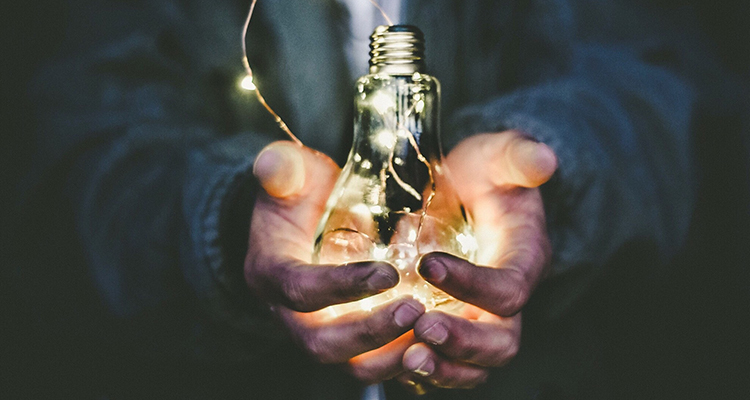
Creativity: Staying up outside of normal hours may also make someone more likely to think outside the box. Creativity and late nights go hand-in-hand, which is likely why many creative professionals (such as artists and writers) prefer to work while the nation sleeps. Even those of us who tend to wake up early may find our morning juices flowing after sunset.
Inventiveness: Inventiveness is really a type of creativity, but it’s one that night owls have in spades. Part of this may have to do with the way their brains are pre-programmed, but society acts as another factor. Night owls are forced to get inventive, looking for ways to adapt their lifestyle to a rat race geared towards day-light hours. If a night owl wants to order a pizza at 3:00 AM, they’ll have to get more imaginative than someone ordering a pizza at 3:00 PM.
Intelligence: We’ve already established that morning larks tend to do better in school, but academics aren’t always the best demonstration of innate intelligence. In 2009, a study linked night owls to higher IQs. The difference in IQ persisted even when the scientists controlled for other factors, such as age and education. Another study conducted on US Air Force recruits revealed similar results as did a study conducted on students enrolled in an MBA program. However, these studies were all conducted on people in the throes or barely out of adolescence. Young adults tend to have different sleeping patterns than everyone else with a propensity for staying up late. And the world that doesn’t cater to night owls does make an exception during the college years. This doesn’t negate the findings, but it does offer food for thought.
Alertness: Many of us think of alertness as something reserved for morning people; after all, night people are better known for sleeping in, undisturbed by the proverbial freight train that loudly speeds around them. But researchers in Belgium found that, while both morning people and night people exhibited equal levels of mental alertness initially (or about one and a half hours after waking), the night owls had the edge when it came to alertness nine hours later. One of the reasons may have to do with tiredness: Morning larks rise so early that they tire early too; come nightfall, many find it difficult to even page through a novel (let alone take an alertness test). Night owls, conversely, are much more likely to go to bed while they’re still alert – they don’t hit the sheets because they’re tired, but rather because they need to get some shut-eye.
Strength: It’s not unusual for night owls to pull themselves out of bed in the morning, strap on a pair of tennis shoes, and then rue every step of their jog around their old high school track. But evening is a different story entirely as owls feel alive and full of vigor, energy, and stamina. This isn’t only in the head of the night owl, either; it’s rooted in science. Night owls, unlike morning larks, experience an extra burst of leg strength late at night, making workouts easier when done after the sun goes down.
Bonus quality: Better at baseball!
Outside of those reliving the glory years on the diamond, baseball isn’t likely to matter to the average person. It’s not a major factor unless you’re in the major leagues. And, if you are stepping up to the primetime plate, it’s better for you to stay up late. One study (admittedly tiny and selective though interesting nevertheless) found that night owls had an edge when it came to batting average.
Their averages increased in games played after 8:00 PM. Morning larks, on the opposite side of the field, had higher averages in games that started before 2:00 PM.
What’s more, even when the players played during their preferred times (morning larks played early games and night owls played later), the sharper edge went to night owls (and by a dead center mile). Couple this with the fact that the vast majority of baseball games are played in the evenings and this makes MLB one of the few industries that actually caters to night lovers.
Changing Sleep Status
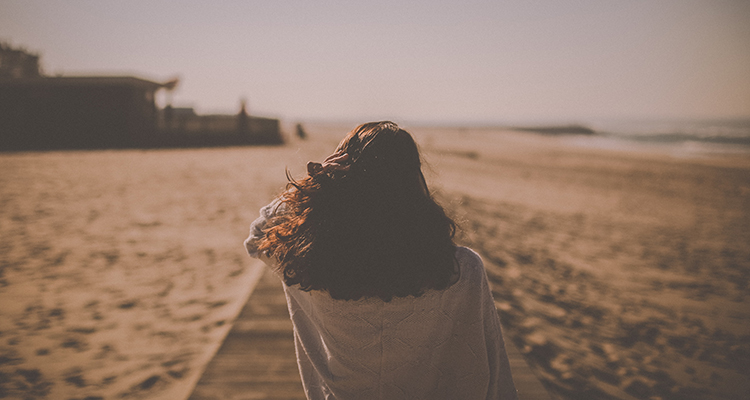
Not everyone wants to change their sleep patterns; some of us are happy with the way things are while others are handcuffed to the metaphorical bedpost because of career responsibilities. Some of us can’t change our patterns because of our family life and some of us prefer to engage in the sleep style that allows us to feel most like ourselves.
But for anyone wishing they were better at mornings (or, heck, even more awake at night), there are ways to alter the cycle. You might not change your biological predisposition, but you can likely train yourself to learn how to live with a new sleep routine. A few clues of the snooze include:
- Make the bedroom more conducive to sleep (for anyone hoping to sleep later, this might involve purchasing blackout curtains)
- Limit coffee and food to certain times of the day
- Avoid oversleeping (for anyone trying to become more of a morning person)
- Reduce the amount of time spent on social media or the amount of time spent multi-tasking (especially at night)
- Choose a job that caters to the preferred sleep style (for anyone who wants to be a morning lark, stay away from careers that require late hours)
- Switch up exercise routines (for people wanting to be morning larks, exercise first thing upon waking; for people wanting to be night owls, exercise late in the evening)
- Read awesome and informative articles on sleep like this one (check!)
And Now a Bedtime Story
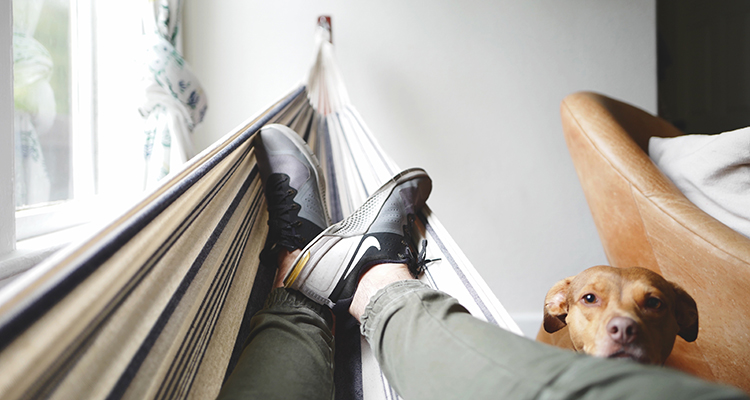
In conclusion, sleep is fascinating and what we know about it probably doesn’t hold a candle to what we still have to learn. Yet sleep isn’t set in stone, it’s set in sand (delivered, perhaps, by the Sandman himself).
Anyone hoping to change their “bird status” likely can. It takes practice, perseverance, and the ability to go with the flow. In the meantime, we’ll do what all birds do, and wing it the best we can.
References:
https://cosmosmagazine.com/biology/it-s-our-genes-that-make-us-stay-up-late/
https://www.medicalnewstoday.com/articles/320554
https://www.ncbi.nlm.nih.gov/pmc/articles/PMC4642677/
https://www.keckmedicine.org/does-being-a-night-owl-affect-your-health/
https://www.tandfonline.com/doi/full/10.1080/07420528.2018.1454458
https://www.earlytorise.com/the-truth-about-night-owls/
https://www.webmd.com/sleep-disorders/news/20180412/who-lives-longer—-night-owls-or-early-birds
https://www.cdc.gov/features/school-start-times/index.html
https://www.utoronto.ca/news/early-bed-early-rise
https://personal.lse.ac.uk/kanazawa/pdfs/paid2009.pdf
https://www.sciencemag.org/news/2009/04/good-news-night-owls
https://www.businessinsider.com/benefits-of-being-a-night-owl-2017-6

















